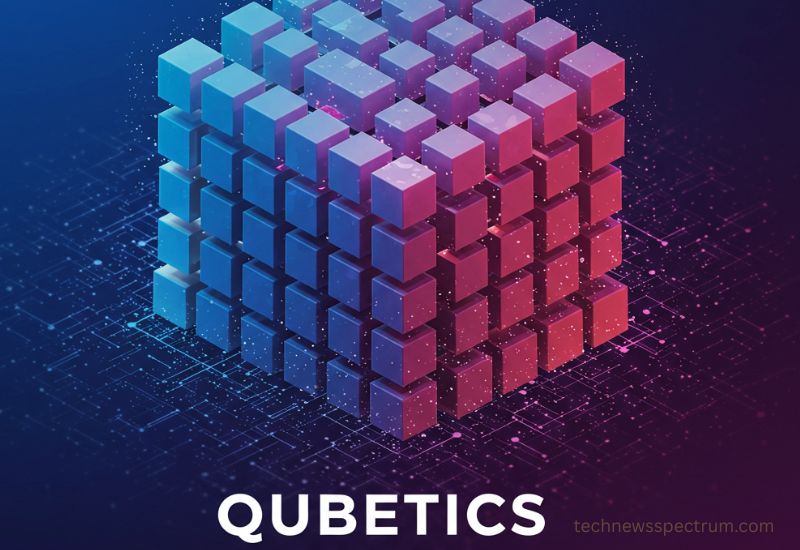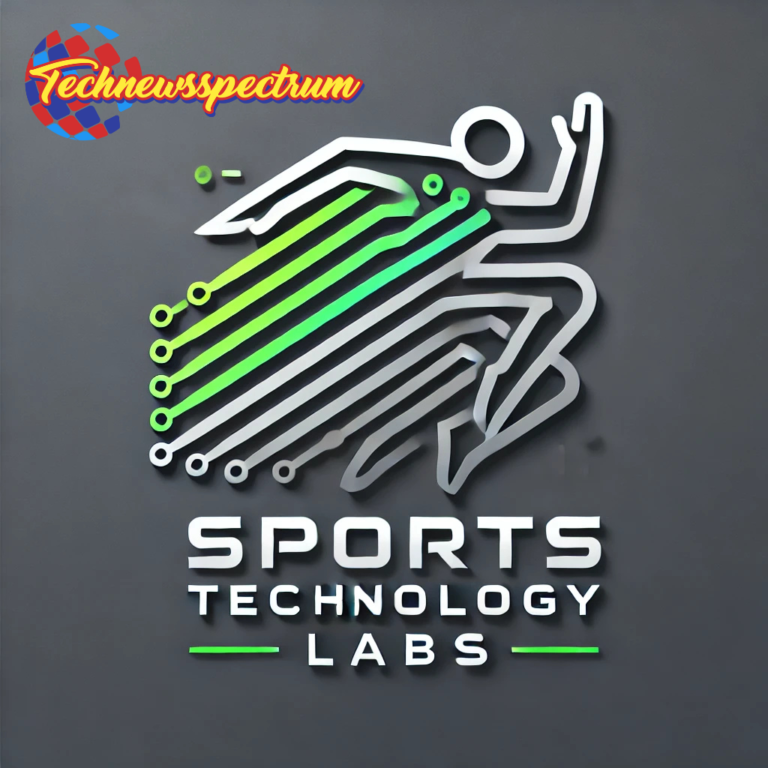Qubetics Explained: What It Is, How It Works and Why It Matters in 2025
Introduction
The term Qubetics is starting to buzz across tech platforms, meme cultures and crypto channels. Although its definition hasn’t yet been standardized, it’s surfacing frequently enough to spark curiosity among developers, investors and trend-watchers. Discussions around Qubetics are increasing, placing it alongside digital assets like Cro Coin and Cronos crypto, while also weaving into more unorthodox conversations ranging from Andy meme coin to search threads involving swift pest solutions or even unusual topics like Andy’s termites and “do termites buzz.”
On social media and Reddit boards, Qubetics is being interpreted as a symbol of transformation. Some associate it with experimental blockchain frameworks or decentralization projects. Others highlight its connection to performance-based systems whether related to processing speed or decision-making algorithms. It’s also appearing in side-by-side mentions with terms like eye cro, hinting at possible overlap with emerging tech layers or data verification protocols.
Search volume around the word “qubetics” is moving upward, especially in the last quarter. It’s often picked up in combination with futuristic infrastructure topics like hyperfiber internet and surprisingly, even finds its way into analog comparisons, such as diagnosing a ticking noise in engine when accelerating implying outdated systems struggling under pressure.
This article brings clarity to the topic by addressing three core points: what Qubetics is, how it may work as a potential digital framework or tech philosophy and why it’s being mentioned more frequently in 2025. Whether it becomes a tool, a movement or simply a buzzword, Qubetics has already started carving out space in future-focused conversations some grounded in software evolution, others less expected but no less intriguing.
What is Qubetics?
Qubetics is a relatively new term gaining attention across various online platforms. While there is no formal definition yet, it is often referred to in discussions on experimental technology, speculative crypto networks and decentralized frameworks. Its rising popularity appears to stem from its association with innovation, independence from traditional infrastructures and potential ties to blockchain-centered ecosystems.
What makes Qubetics unique isn’t just the mystery surrounding its structure it’s also the mix of communities fostering the term. Reddit threads, tech blogs and Discord servers focused on emerging markets are among the earliest places where Qubetics gained traction. On platforms like X (formerly Twitter), hashtags featuring “Qubetics” are sometimes bundled with trends such as eye cro, Cro Coin or Cronos crypto, positioning it alongside both established names and experimental tokens.
Speculation has pushed the term beyond typical crypto conversations. For example, some believe Qubetics could be the framework behind a future protocol that merges machine learning, user autonomy and encrypted communication all enabled by faster infrastructures like hyperfiber internet. These conversations often blur the line between serious tech forecasting and internet culture. That’s how Qubetics ends up loosely connected to meme-centric tags like Andy meme coin or even fringe topics including Andy’s termites and strange online queries like “do termites buzz.”
Unusual search trends reveal how broader audiences are beginning to question Qubetics’ purpose. It is frequently mentioned in the same sentence as Swift Pest Solutions, a company unrelated to tech but one that may have appeared alongside overlapping keywords due to indexing quirks. The connection might seem random, yet it reflects just how wide the reach of the term has grown across indexes, feeds and tagging logic.
What also separates Qubetics from better-known technologies like Cro Coin and Cronos crypto is its lack of a public-facing token or foundation. Cro Coin represents the native token of Crypto.com, with clearly defined use cases and exchange value. Cronos crypto operates within a time-tested blockchain ecosystem serving smart contracts and dApps. By comparison, Qubetics has no verified market presence, no roadmap and no central repository. That hasn’t stopped speculation. Anonymous developers claim that the project is hidden in plain sight distributed across multiple GitHub repositories and deliberately misnamed to encourage only persistent researchers to locate it.
In discussions around how people interpret Qubetics, metaphors often come into play. For example, some describe the traditional data delivery systems as having flaws, much like diagnosing a ticking noise in an engine when accelerating something outdated and no longer fit for modern demands. In contrast, Qubetics is talked about like a real-time digital engine one that responds with precision rather than feedback loops or delays. That’s where the term gains weight. Whether it’s just an aspirational idea or a covert experiment, users are treating it like the next step.
On crypto forums, there’s a growing interest in associating Qubetics with high-performance transaction speeds, privacy layers and decentralized identities. While these are features already seen in certain blockchains, Qubetics allegedly offers a way to customize protocols without constant validation bottlenecks. This claim remains theoretical for now but it hasn’t stopped people from linking it to larger infrastructure pieces or proposing early frameworks for open-source collaboration.
Whether Qubetics is a codebase, a theory or a collective tech movement remains unclear. What is certain is that attention continues to grow around the term. As more creators, hobbyists and meme coins like Andy meme coin latch onto the idea, Qubetics is shaping into something worth watching even if its full outline hasn’t yet taken form.
How Qubetics Works in Practice
Qubetics is often described as a fluid framework rather than a single product or platform. It appears to combine concepts from decentralized processing, crypto-backed architecture and adaptive systems. Though still in its early conversation phase, many compare its flexibility to how systems route data through distributed nodes similar to peer-to-peer networks or blockchain layers.
The behavior of Qubetics is often explained through modular design. Instead of relying on one chain, server or endpoint, it’s believed to operate by reacting to its inputs dynamically. This would mean decisions, computations or executions shift based on conditions fed through varying input points like geolocation, device load or even bandwidth availability.
One possible similarity can be drawn to the way hyperfiber internet adjusts resource delivery in real time. Just as hyperfiber reroutes for performance, Qubetics is reportedly designed to reduce friction between data requests and response outcomes. This adaptive pattern may help address delays seen in older systems much like resolving a ticking noise in an engine when accelerating by removing the outdated part.
Some online discussions pair Qubetics with experimental crypto tokens such as Cro Coin and projects under the Cronos crypto framework. While those are established blockchains, Qubetics is treated more as a layered methodology that could update or interact with them rather than compete directly.
There’s also online chatter connecting Qubetics to token-based economies like Andy meme coin or unexpected sources like Swift Pest Solutions, Andy’s termites and even odd phrase matches like “do termites buzz.” Whether those links are algorithm quirks or hidden Easter eggs is still being debated.
At its center, Qubetics seems to represent a response-ready design that shifts with input conditions a definition still forming as interest spreads.
Growing Applications for Qubetics in 2025
Qubetics is beginning to show up in discussions about next-gen infrastructure, particularly where automation and real-time systems intersect. While it’s too early to classify it as a deployable technology, the name continues to be tied to early experiments across digital industries, including machine-to-machine communication, token-based micro-incentives and adaptive algorithms.
Developers and speculative communities online are exploring how Qubetics could shape newer systems that respond instantly to change. This theoretical model aligns with how streaming platforms or logistics networks are now operating powered by instant transactions and predictive actions. Some suggest Qubetics may build on ideas already attempted by mesh frameworks or reactive drones but with more fluid data engagement and peer-linked decision logic.
Crypto circles speculate that Qubetics could become a flexible extension protocol rather than a coin. That distinction separates it from established assets like Cro Coin or Cronos crypto, which follow fixed blockchain models. Qubetics, in contrast, is being talked about as something layered on top of other tools a silent conduit rather than a public-facing token.
Oddly enough, the keyword has also popped up next to unrelated brands and search combinations, including Swift Pest Solutions, Andy meme coin and even fringe mentions like Andy’s termites or whether “do termites buzz.” While it could be the result of indexing behavior or social seeding campaigns, the spread only adds to its mystery.
Some internet communities have pulled in tools like eye cro as conceptual comparisons, blending biometric inputs with digital ecosystems. Others link Qubetics to infrastructures supported by hyperfiber internet, which enables near-zero delay in data processing mirroring what Qubetics might aim to achieve through logic rather than speed alone.
What’s clear is that Qubetics continues to pull attention from unexpected directions, possibly reflecting how unpredictable its use cases may be.
Separating Hype from Innovation
The rising interest in Qubetics has led to mixed reactions. On one side, tech enthusiasts suggest it points to a new approach in system design or decentralized operation. On the other, there’s speculation that Qubetics may be gaining traction mostly due to meme culture, trending keywords and clever tagging rather than any actual product or codebase.
Like many buzzwords that start in niche communities, Qubetics gained visibility through association. It’s been linked with both established crypto terms like Cro Coin and Cronos crypto and meme-heavy projects such as Andy meme coin. While these connections suggest activity, they don’t confirm a clear use case or technical document to support the claims.
Phrases like “do termites buzz” or references to “Andy’s termites” have popped up alongside Qubetics in unrelated search spaces, possibly fueled by meme strategies or SEO baiting. Similar tactics have placed unrelated brands, including Swift Pest Solutions, into digital conversations that stretch across social media, YouTube thumbnails and Reddit posts. These moments create noise around Qubetics but they don’t always offer substance.
Even mentions of eye cro and hyperfiber internet in Qubetics discussions may serve more as comparisons than as indicators of direct connection. The same applies to analogies involving a ticking noise in engine when accelerating a subtle way of expressing dissatisfaction with current systems rather than describing a real technical fix.
Right now, no verifiable code repository, product page or working demo confirms Qubetics as a functioning platform. Until that appears, separating its true value from coordinated hype remains part of the discussion. The attention it’s receiving is real but whether it leads to technical progress or fades as a meme is still up in the air.
Qubetics vs Legacy Systems
Modern platforms, whether cloud-based or hardware-heavy, prioritize speed, availability and scale. Yet even with infrastructure advancements like hyperfiber internet, traditional systems face friction. Issues like lag, packet loss or centralized bottlenecks still create performance gaps. These inefficiencies are often compared to a ticking noise in an engine when accelerating subtle but persistent reminders that something in the system isn’t built for the pace of current demands.
Qubetics emerges as a proposed alternative to these older models. Instead of waiting for instructions from a central authority or server, Qubetics appears to enable reactive nodes each responding autonomously based on localized data. The aim isn’t to replace platforms like hyperfiber or cloud networks but to reduce dependencies that slow things down.
In practical terms, Qubetic’s promotes a shift from linear task execution to distributed responsiveness. That difference makes it theoretically compatible with decentralized technologies and blockchain systems, where delays in validation or processing often impact user experience. Unlike platforms such as Cro Coin or Cronos crypto which follow fixed protocols, Qubetic’s is rumored to use adaptive behavior adjusting to changes mid-process without restarting from scratch.
Community chatter has drawn quirky comparisons. Some threads rope in Swift Pest Solutions, Andy meme coin and even unrelated content like Andy’s termites or queries about whether do termites buzz added noise that might obscure the actual innovation being discussed. Others liken Qubetic’s modular design to the function of eye cro a tool said to respond instantly to biometric input, supporting the idea of personalized automation.
While legacy systems still run the backbone of most industries, ideas similar to Qubetic’s open the door for structures built around constant real-time adjustment, where processes tune themselves instead of requiring external corrections.
Why Qubetics Matters in 2025
As digital systems continue to scale, the demand for faster, smarter and more flexible architecture grows. Qubetics is beginning to represent that shift. While still undefined by mainstream standards, its arrival within tech discussions points to growing interest in more adaptable frameworks ones that could impact how data is processed, secured and moved in real time.
If Qubetics develops according to current speculation, it could disrupt several industries. Crypto-based technologies may be among the first to test its approach, especially since traits described in Qubetics automation, reactive flow, adaptive logic align with pain points many blockchains face. Projects like Cro Coin and Cronos crypto have addressed scalability and speed limits through layered architecture. Qubetics is appealing because it theoretically skips these layers, reducing time between input and output without compromising performance.
In areas like cloud infrastructure, where businesses rely on responsiveness, Qubetics could challenge current standards. While solutions like hyperfiber internet upgrade the backbone, Qubetics seems to address the logic handling. The combination could streamline services across industries that rely on automation, ranging from logistics to cybersecurity.
Social references have also played a role in its momentum. Mentions across forums have connected Qubetic’s to both serious and satirical tags, including Andy meme coin, eye cro and eyebrow-raising topics like Swift Pest Solutions, Andy’s termites and do termites buzz. Whether intentional or algorithm-driven, this exposure has boosted curiosity.
Why now? The timing aligns with rising frustration toward traditional infrastructure that acts like a ticking noise in an engine when accelerating signs of inefficiency that are hard to ignore. Qubetic’s steps into that gap, offering the concept of a structure that adapts, responds and scales with fewer moving parts.
FAQs About Qubetics
1. What is Qubetics and why is everyone talking about it?
Qubetics is a rising tech concept discussed across crypto forums, social media and emerging tech blogs. While there’s no official structure behind it yet, many believe it points to the future of adaptive systems, possibly linked to decentralized technology and automated data logic.
2. Is Qubetics a cryptocurrency like Cro Coin or Cronos Crypto?
No. While it’s often mentioned alongside coins like Cro Coin and Cronos crypto, Qubetic’s is not a token or blockchain product in a traditional sense. Instead, it’s being described as a possible framework or concept for how future technology can function reactive, fast and distributed.
3. Are projects like Andy Meme Coin or Swift Pest Solutions involved with Qubetics?
Neither has confirmed involvement. Mentions of Andy meme coin, Swift Pest Solutions and even unusual queries like “do termites buzz” may be the result of social baiting, keyword trends or algorithmic overlaps not verified partnerships or technical collaborations.
4. Does Qubetics work with hyperfiber internet?
Not directly. However, Qubetics is often discussed in contrast or comparison to technologies like hyperfiber internet, which aims to solve data speed issues. Qubetic’s appears to focus more on the structure and behavior of how data responds rather than the raw speed of delivery.
5. Why is Qubetics compared to a ticking noise in an engine when accelerating?
It’s a metaphor. Legacy systems that underperform or create lag are described like a ticking noise in an engine when accelerating barely noticeable issues that point to larger internal problems. Qubetic’s is viewed as a way to address these inefficiencies before they affect performance.
6. Where could Qubetics be adopted first?
If Qubetic evolves into something functional, adoption could start in crypto (through plugin protocols), cloud-based platforms needing flexible processing or even data security applications. Some believe uses may branch out into biometric tools, similar to discussions involving eye cro.
7. Is Qubetics real or just a meme?
At this point, Qubetic exists mostly in idea form. Its online presence may be boosted by memes, SEO strategies and digital noise. Still, the ongoing conversations show that many see value in the possibilities it represents even before any confirmed product is attached.
Visit us at Facebook







